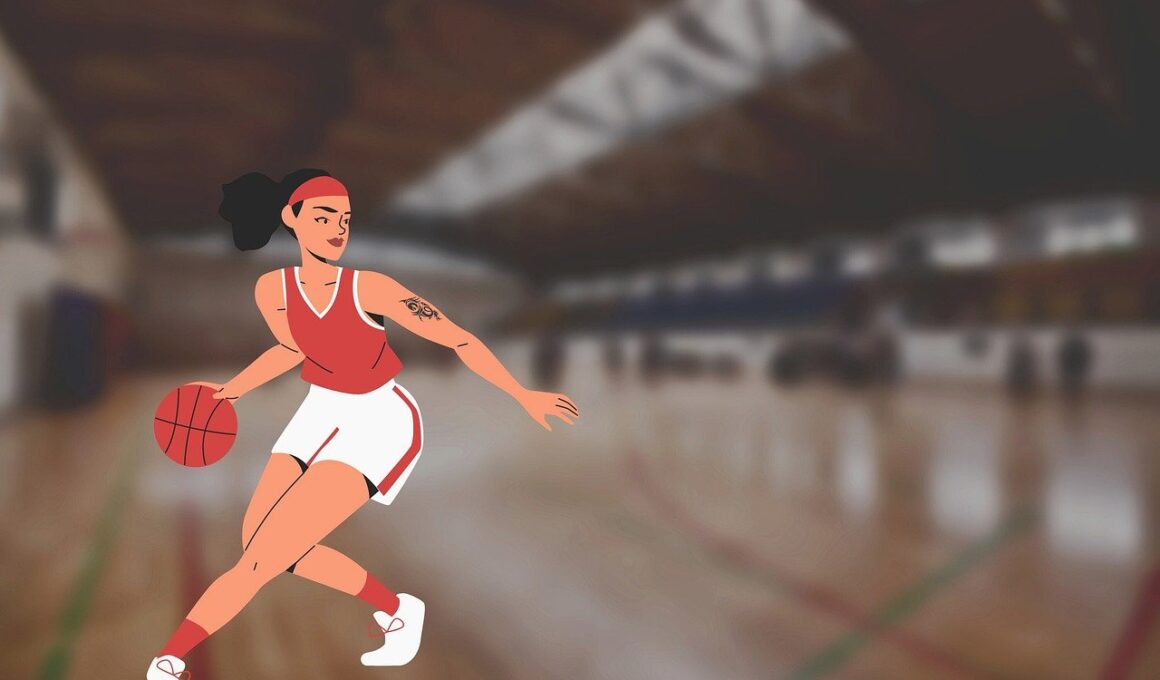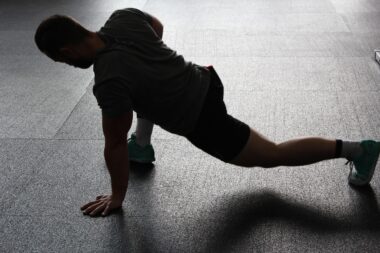Tips for Increasing Endurance for Better Basketball Performance
Improving endurance is crucial for basketball players looking to enhance their performance on the court. Endurance allows athletes to sustain high energy levels throughout the game, making it essential for success. To develop endurance effectively, players should focus on a well-rounded training program that includes both cardiovascular and strength training. Incorporating aerobic exercises like running or cycling helps in building a strong cardiovascular base, while strength training supports muscle endurance. One actionable tip is to integrate interval training into your routine, alternating between high-intensity efforts and lower-intensity recovery periods. This method increases overall stamina and prepares players for the intermittent nature of basketball. Monitoring your heart rate during workouts can provide useful insights into your endurance levels. Over time, as your endurance increases, you should gradually intensify your workouts. Staying hydrated is also critical to maintaining performance during practices and games. Furthermore, consider nutritional factors that fuel your body efficiently. Eating a balanced diet rich in carbohydrates, proteins, and healthy fats will support higher energy levels. Finally, prioritize rest and recovery to prevent burnout and injury.
Consistency in training is also necessary for long-lasting endurance improvement. Setting a schedule or training plan can help players remain committed and progressive in their workouts. It is advisable to make endurance training a priority, ensuring it is included in both pre-season and in-season routines. This systematic approach assists in gradually increasing the intensity and duration of training sessions without risk of overtraining. Another practical tip is to combine different forms of exercise that will keep routine engaging and beneficial. Activities like swimming or rowing are not only enjoyable but also effective in improving cardiovascular health. Integrating circuit training with basketball drills can effectively maximize time and increase both skills and endurance. Players should also pay attention to the weariness signals from their bodies and allow adequate recovery, including rest days to rejuvenate physically and mentally. Utilizing techniques such as cross-training can further diversify workout routines and target various muscle groups. Experimenting with various endurance techniques and being open to adjustments as needed can help create a personalized endurance training approach. Supplementing workouts with proper nutrition will enhance effectiveness and performance on the court.
Building Endurance Through Nutritional Support
Proper nutrition plays a vital role in supporting endurance training and overall athletic performance. To fuel workouts effectively, basketball players should prioritize complex carbohydrates, as they provide sustained energy. Foods such as whole grains, fruits, and vegetables are excellent sources of necessary carbohydrates. Additionally, focusing on protein intake helps in repairing and building muscles after intense sessions. Lean meats, dairy, and plant-based protein sources like beans serve well. Hydration is of utmost importance during training and competition. Consuming enough fluids will prevent fatigue and allow athletes to maintain peak performance levels throughout games. Electrolyte balances should be restored during long workouts to avoid cramping and dehydration. Incorporating snacks that contain both carbohydrates and protein before and after training sessions can significantly benefit recovery and performance. Smoothies and energy bars are ideal examples of such snacks. Planning meals around workout schedules, allowing sufficient time for digestion before practice or games, is also crucial. Carving out time for food prep can simplify maintaining a balanced diet while managing a busy athletic schedule. Lastly, players should monitor how different foods influence their energy levels to optimize their diets effectively.
A strong mental attitude complements physical endurance training. Players must understand the importance of mental resilience and the willpower it takes to push through challenging workouts and games. Implementing techniques such as mindfulness or visualization can improve focus and relieve anxiety in competitive situations. Athlete-specific strategies like goal-setting, journaling, or affirmations can help maintain motivation over time. Committing to a routine and reminding oneself of the ultimate goals can further keep the athlete on track. Joining a training group or finding a workout partner can add a social aspect, making the process enjoyable while enhancing endurance through friendly competition. Engaging with peers also encourages accountability, enhancing commitment to the training schedule. Regularly reviewing one’s progress fosters a sense of achievement, reinforcing perseverance through the tough moments common in sports. Players should also approach fatigue with a proactive mindset and not become disheartened by temporary setbacks. Emphasizing the improvement journey rather than just the end result can result in greater overall satisfaction and long-term motivation. By harmonizing mental strategies with physical training, players can elevate their performance levels significantly, fostering a well-rounded approach to basketball endurance.
Practical Drills for Endurance Development
When it comes to developing endurance specifically for basketball, players can incorporate several practical drills that simulate game conditions. These drills emphasize the need for continuous movement and quick changes of pace, which are vital in matches. One effective drill is the shuttle run, which requires participants to sprint back and forth between cones. This exercise enhances both aerobic capacity and sprint endurance. Additionally, players can focus on the “down and back” drill, where they sprint toward the baseline and quickly return while maintaining proper basketball form. This method helps simulate the bursts of energy required during the game. Another drill is the “3-on-2, 2-on-1” fast break drill, which emphasizes end-to-end activity, improving cardiovascular fitness while working on offensive skills. Incorporating defensive slides enhances agility and endurance, as the drill intensifies with speed and repetition. Using resistance belts during sprints can also boost endurance training effectiveness, challenging the body while mimicking the resistance faced during demanding game situations. It is essential to combine these drills with consistent practice to yield optimal results. Implementing variety in workout sessions will help sustain motivation and engagement through endurance challenges.
Recovery plays a pivotal role in enhancing endurance and should not be overlooked. After an intense training session, players need to allow muscle recovery to minimize fatigue and enhance performance. Rest days are essential, as are active recovery strategies like gentle cycling or yoga to improve blood circulation and flexibility. Stretching routines post-workout can also help alleviate tightness in muscles and joints. Sleep hygiene is another crucial factor; ensuring adequate sleep duration and quality significantly impacts recovery and energy levels. Develop a sleep-friendly environment by minimizing noise and maintaining darkness during hours. Hydration is essential not only during workouts but also after, replenishing lost fluids to support recovery. Incorporating foam rolling into the routine can alleviate muscle soreness and promote recovery through myofascial release. Nutrition is also vital post-training, as providing the right macronutrients is essential to support healing and energy restoration. Timing meals to be as close to workouts as possible maximizes the recovery impact. Maintaining an individualized recovery plan based on personal needs and how one feels post-training aids in better managing energy levels. By prioritizing recovery, athletes can significantly improve their overall endurance performance on the court.
Conclusion: The Importance of Endurance in Basketball
In conclusion, endurance is a critical component of successful basketball performance. Players willing to invest time into enhancing their endurance levels will notice improvements in their ability to sustain energy throughout games consistently. A combination of strategic training, proper nutrition, mental resilience, and recovery practices contributes to implementing effective endurance training strategies. By committing to a versatile and engaging training program, players can enjoy not only the process but also excel in their game. Consistency is paramount; gradual improvement across all areas fosters a more dynamic approach to basketball training. The essence of basketball is its fast-paced nature, famous for quick transitions and intense action that requires endurance. Emphasizing endurance training within a broader skill development plan will lead to a more complete player. The goal should always be to combine these endurance techniques with other basketball skills for maximum impact. Thus, aspiring athletes should take their endurance training seriously, balancing intensity with recovery and nutrition. With dedication and the right approach, athletes elevate not just their endurance, but their overall game, bringing them one step closer to achieving their basketball ambitions.






